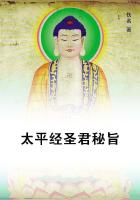The term albuminous body is used here in the sense in which it is employed in modern chemistry, which includes under this name all bodies constituted similarly to ordinary white of egg, otherwise also known as protein substances. The name is an unhappy one, because ordinary white of egg plays the most lifeless and passive role of all the substances related to it, since, together with the yolk, it is merely food for the developing embryo. But while so little is yet known of the chemical composition of albuminous bodies, this name is better than any other because it is more general.
Wherever we find life we find it associated with an albuminous body, and wherever we find an albuminous body not in process of dissolution, there also without exception we find phenomena of life. Undoubtedly, the presence of other chemical combinations is also necessary in a living body in order to induce particular differentiations of these phenomena of life;but they are not requisite for naked life, except in so far as they enter the body as food and are transformed into albumen. The lowest living beings known to us are in fact nothing but ****** particles of albumen, and they already exhibit all the essential phenomena of life.
But what are these universal phenomena of life which are equally present among all living organisms? Above all the fact that an albuminous body absorbs other appropriate substances from its environment and assimilates them, while other, older parts of the body disintegrate and are excreted.
Other non-living, bodies also change, disintegrate or enter into combinations in the natural course of events; but in doing this they cease to be what they were. A weather-worn rock is no longer a rock, metal which oxidises turns into rust. But what with non-living bodies is the cause of destruction, with albumen is the fundamental condition of existence. From the moment when this uninterrupted metamorphosis of its constituents, this constant alternation of nutrition and excretion, no longer takes place in an albuminous body, the albuminous body itself comes to an end, it decomposes, that is, dies . Life, the mode of existence of an albuminous body, therefore consists primarily in the fact that every moment it is itself and at the same time something else; and this does not take place as the result of a process to which it is subjected from without, as is the way in which this can occur also in the case of inanimate bodies. On the contrary, life, the metabolism which takes place through nutrition and excretion, is a self-implementing process which is inherent in, native to, its bearer, albumen, without which the latter cannot exist. And hence it follows that if chemistry ever succeeds in producing albumen artificially, this albumen must show the phenomena of life, however weak these may be. It is certainly open to question whether chemistry will at the same time also discover the right food for this albumen.
From the metabolism which takes place through nutrition and excretion, as the essential function of albumen, and from its peculiar plasticity proceed also all the other most ****** factors of life: irritability, which is already included in the mutual interaction between the albumen and its food; contractibility, which is shown, even at a very low stage, in the consumption of food; the possibility of growth, which in the lowest forms includes propagation by fission; internal movement, without which neither the consumption nor the assimilation of food is possible.
Our definition of life is naturally very inadequate, inasmuch as, far from including all the phenomena of life, it has to be limited to those which are the most common and the ******st. From a scientific standpoint all definitions are of little value. In order to gain an exhaustive knowledge of what life is, we should have to go through all the forms in which it appears, from the lowest to the highest. But for ordinary usage such definitions are very convenient and in places cannot well be dispensed with; moreover, they can do no harm, provided their inevitable deficiencies are not forgotten.
But back to Herr Dühring. When things are faring badly with him in the sphere of earthly biology, he knows where to find consolation;he takes refuge in his starry heaven.
"It is not merely the special apparatus of an organ of sensation, but the whole objective world, which is adapted to the production of pleasure and pain. For this reason we take it for granted that the antithesis between pleasure and pain, and moreover exactly , in the form with which we are familiar, is a universal antithesis, and must be represented in the various worlds of the universe by essentially homogeneous feelings...
This conformity, however, is of no little significance, for it is the key to the universe of sensations... Hence the subjective cosmic world is to us not much more unfamiliar than the objective. The constitution of both spheres must be conceived according to one concordant type, and in this we have the beginnings of a science of consciousness whose range is wider than merely terrestrial" {D. Ph. 139-40}.
What do a few gross blunders in terrestrial natural science matter to the man who carries in his pocket the key to the universe of sensations? Allons donc! ["Well, really!"]
IX.
MORALITY AND LAW.
ETERNAL TRUTHS W e refrain from giving samples of the mish-mash of platitudes and oracular sayings, in a word, of the ****** balderdash with which Herr Dühring regales his readers for fifty full pages as the deep-rooted science of the elements of consciousness. We will cite only this:
"He who can think only by means of language has never yet learnt what is meant by abstract and pure thought" {D. Ph. 189}.
On this basis animals are the most abstract and purest thinkers, because their thought is never obscured by the officious intrusion of language.















